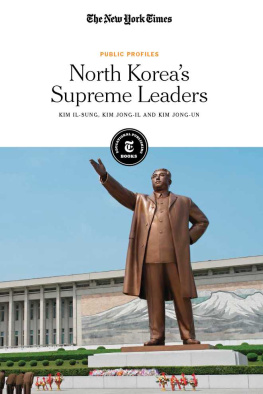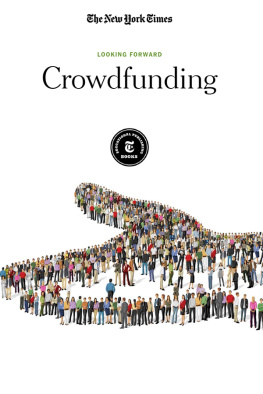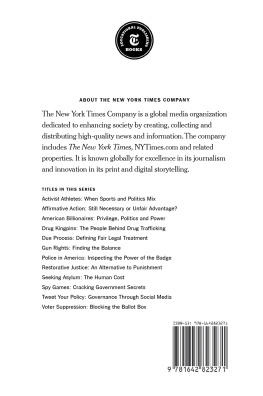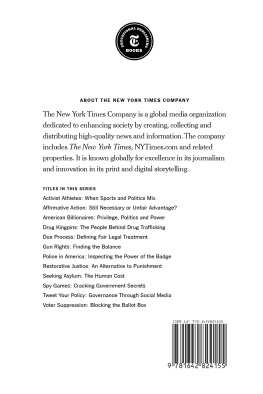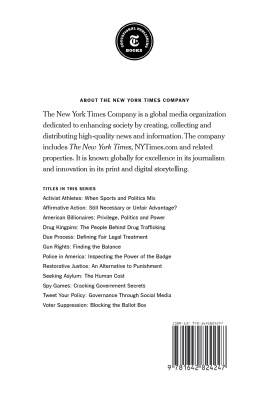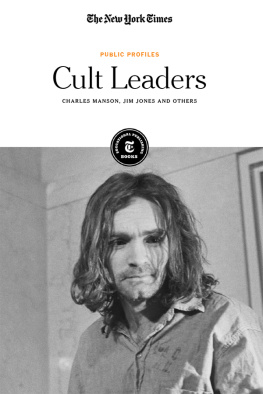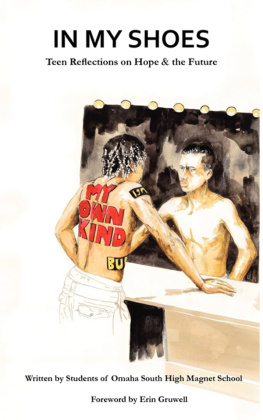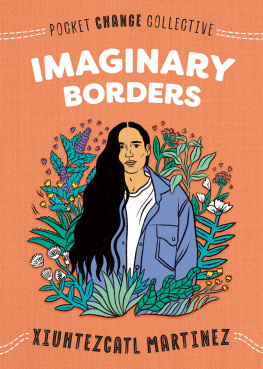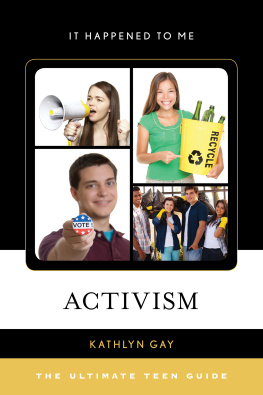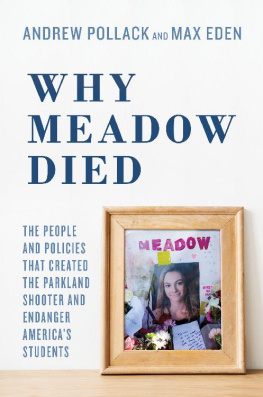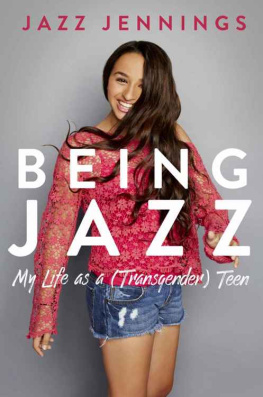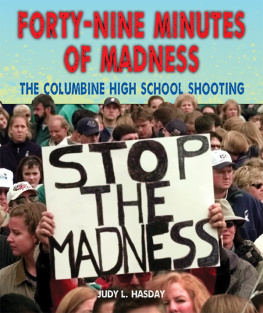Published in 2020 by New York Times Educational Publishing in association with The Rosen Publishing Group, Inc. 29 East 21st Street, New York, NY 10010
Contains material from The New York Times and is reprinted by permission. Copyright 2020 The New York Times. All rights reserved.
Rosen Publishing materials copyright 2020 The Rosen Publishing Group, Inc. All rights reserved. Distributed exclusively by Rosen Publishing.
First Edition
The New York Times
Alex Ward: Editorial Director, Book Development
Phyllis Collazo: Photo Rights/Permissions Editor
Heidi Giovine: Administrative Manager
Rosen Publishing
Megan Kellerman: Managing Editor
Danielle Weiner: Editor
Greg Tucker: Creative Director
Brian Garvey: Art Director
Cataloging-in-Publication Data
Names: New York Times Company.
Title: Teen activists / edited by the New York Times editorial staff.
Description: New York : New York Times Educational Publishing, 2020. | Series: Public profiles | Includes glossary and index.
Identifiers: ISBN 9781642822540 (library bound) | ISBN 9781642822533 (pbk.) | ISBN 9781642822557 (ebook)
Subjects: LCSH: YouthPolitical activityJuvenile literature. | Political activistsJuvenile literature. | Social actionJuvenile literature.
Classification: LCC HQ799.2.P6 T446 2020 | DDC 320.40835dc23
Manufactured in the United States of America
On the cover: On the anniversary of the Columbine shooting, thousands of teenagers in New York City walked out of school to attend a gun control rally and call for sweeping reforms in national gun laws, April 20, 2018; Andrew Lichtenstein/Corbis News/Getty Images.
Introduction
THROUGHOUT THE HISTORY of the United States, activism has driven societal change. Young people have been at the heart of some of the most significant activist movements in the nation. While the efforts of college-age students have been largely recognized as important moments in the nations history, the 21st century shines a spotlight on teenage activists.
Not yet old enough to vote, but politically involved and outspoken nonetheless, todays teenagers have plenty to fight for. As the 21st century heralds a new wave of teen activism, the tactics and tools available to activists have grown and changed. With passion and drive, coupled with a large reach of influence, todays teens may bring about a new era in the United States.
In the early 21st century, teenagers largely took up causes such as climate change, L.G.B.T.Q. rights and provincial issues such as their schools dress codes. This generation of teenagers, also known as Generation Z, knows what kind of world they want to live in and they are ready to fight for it. However, in 2018, an incident occurred that no student should have to encounter: A gunman opened fire at the Marjory Stoneman Douglas High School in Parkland, Fla. He killed 17 people and wounded 17 others. It was the deadliest high school shooting in U.S. history.
After the Parkland shooting, much of teen activism was geared toward the gun control movement. Teenagers, who had previously sued their government over global warming and the right to protest the Pledge of Allegiance, began to lobby for stricter gun laws. While some adults tried to focus the conversation on mental health rather than gun control, teenagers demanded action.
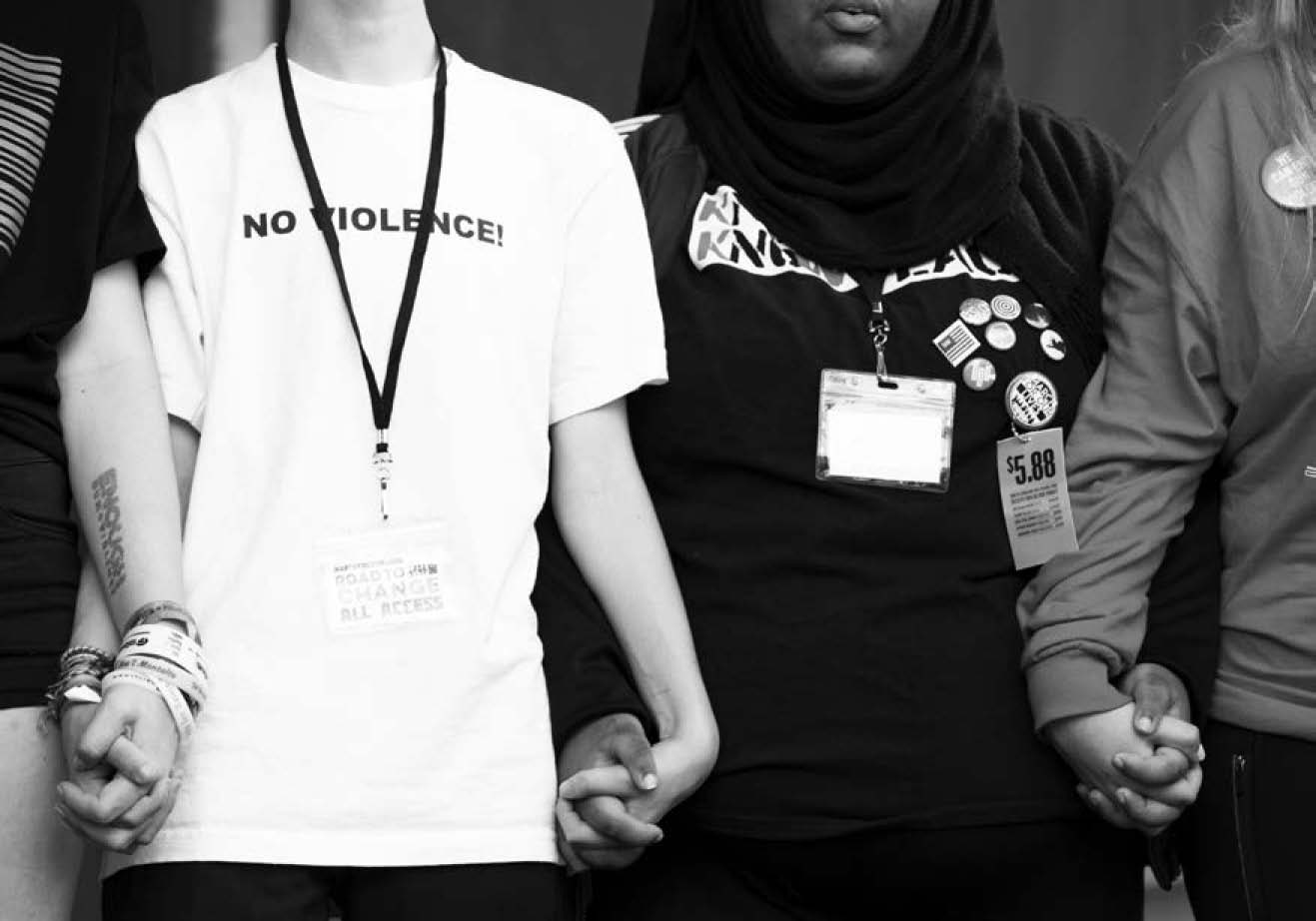
Students from Marjory Stoneman Douglas High School joined hands with local activists during a rally in Greensboro, N.C., in August 2018. The rally was part of a nationwide tour to register voters and pursue stricter gun laws.
Through walkouts, marches, die-ins, sit-ins, rallies and clapbacks on Twitter, teenagers proved to be informed and motivated. Several teens emerged as leaders of the gun control movement. Emma Gonzlez, David Hogg and Sarah Chadwick, all of whom survived the Parkland shooting, became the faces of the cause. Emma Gonzlez and David Hogg would become the most visible, enduring the most criticism and personal attacks, while Sarah Chadwick became known for her amusing and unapologetic action on Twitter.
While the activists may have been expecting opposition from lawmakers, they would also face the emotional burden of fighting for change after having experienced trauma and loss. Activism as a teenager is particularly challenging, as the journey from adolescence to adulthood is difficult in itself. The Parkland teenagers, and all teenage activists, must weigh their activism against their last years of childhood. Emma Gonzlez and David Hogg both faced insults and threats. David Hogg was the victim of a swatting incident, during which someone called the police to his home to investigate a false claim. Teenagers on opposing sides of the gun control movement also faced challenges. Those not in favor of stricter gun laws found it difficult to speak up and navigate classrooms so heavily dominated by gun control activists.
The ultimate outcome of todays teenage activism is not yet clear. Whether change will occur in gun control or not, the issue is ingrained in the nations identity: This is the largest teenage movement in the 21st century so far. Teenagers have carved out a space for themselves in a political and social conversation by defending their rights to life and liberty. As the tools of activism evolve and teen activists continue to be vocal about climate change, L.G.B.T.Q. rights, gun control and more, only time will tell how society will respond to the concerns of these young activists.
CHAPTER 1
From the Individual to the Collective
Teenagers in the United States are vocal on many issues. They protest high school dress codes. They reject obligations to participate in national anthems and pledges. They sue their government over climate change. They both protest, and fight for, the rights of L.G.B.T.Q. students. The teens of the 21st century do not always agree with each other, but they are motivated and well-equipped enough to generate buzz and, perhaps, to generate change for issues that affect individuals and society as a whole.
Baring Shoulders and Knees, Students Protest a Dress Code
BY AL BAKER | JUNE 6, 2012
THE FIRST HINT of the looming rebellion came from the lips of Hao Yang, 17, as he practiced ballroom dancing outside Stuyvesant High School on Wednesday morning, the first licks of sunlight casting a long shadow that made a perfect dance partner on the wall behind him.
Its Slutty Wednesday, said Hao, a senior from Brooklyn, who is headed to Carnegie Mellon University to study electrical engineering.
Today.
Within minutes, a demonstration materialized on West Street, in Lower Manhattan, opposite the entrance to Stuyvesant, one of New York Citys most prestigious public high schools: Scores of giddy students, who had mostly come up from the nearby subway portals, were massing under a tree.
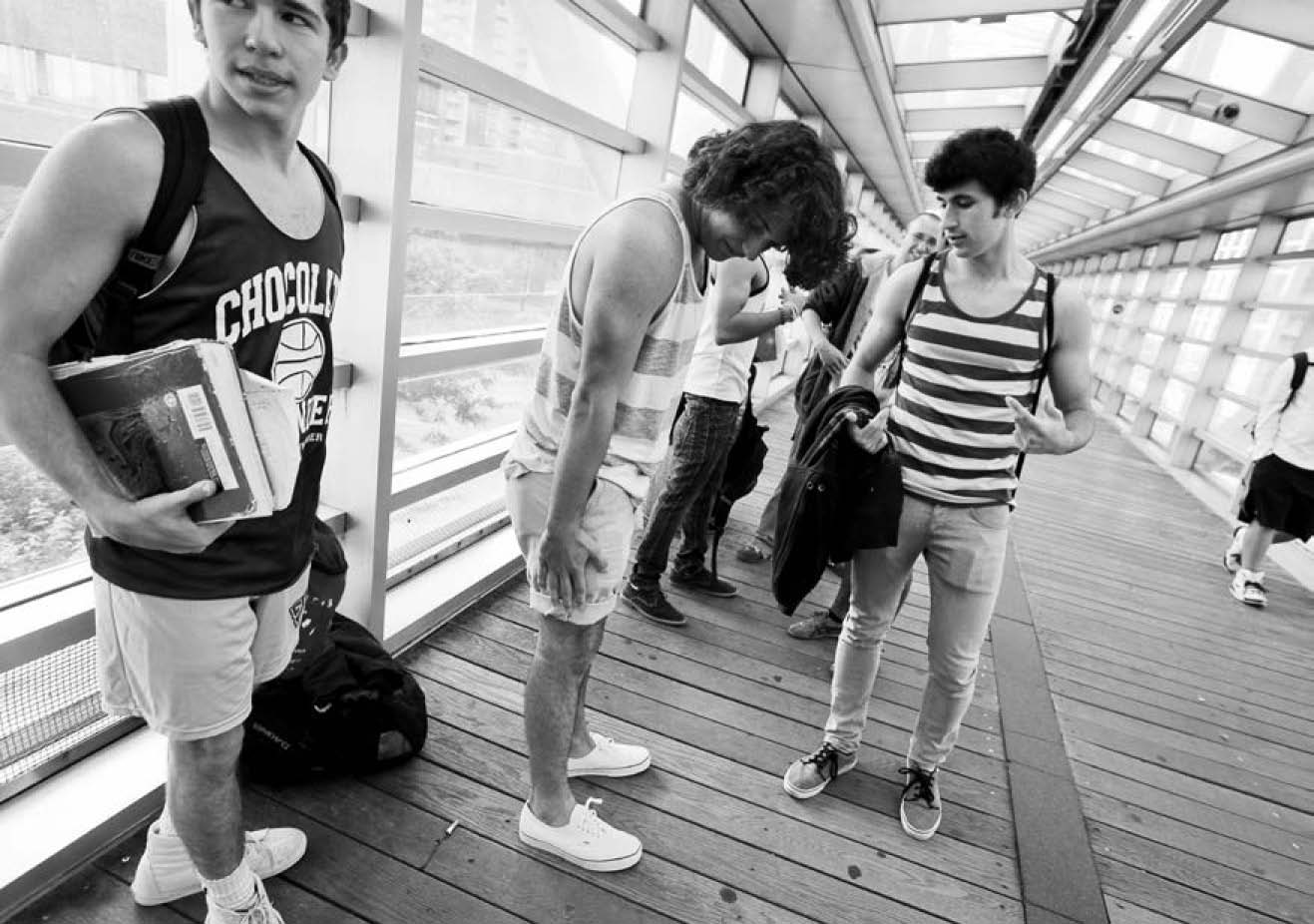
Were not coming in, like, naked, said Andreas Petrossiants, 17, left, with Gil Spivak, also 17. This is acceptable to wear by societys standards.


